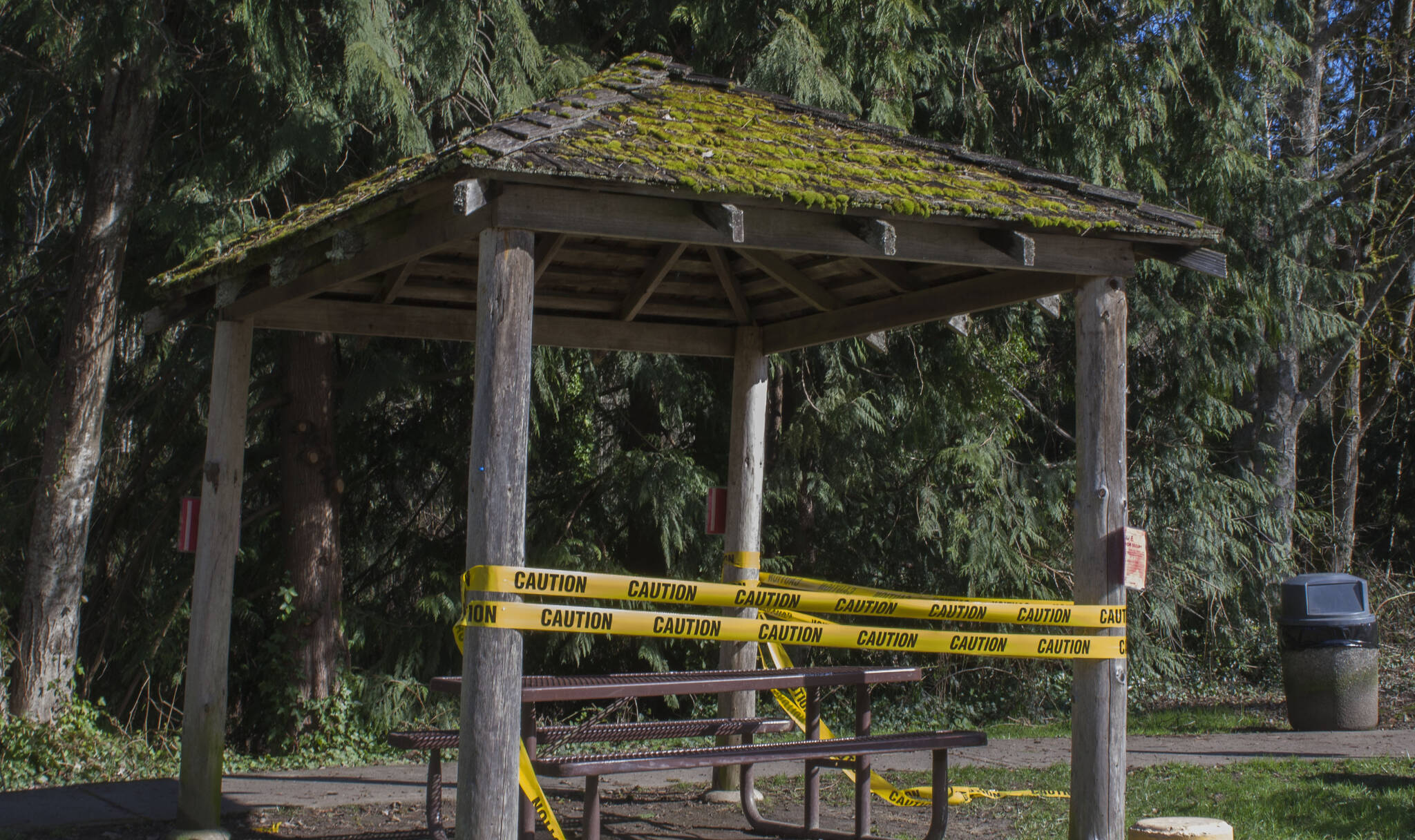The mystery surrounding the “guerilla gazebo” continues even as it’s been condemned and removed.
The city of Bainbridge Island condemned the structure last week for safety reasons and removed it entirely March 11.
No one seems to know who built it or exactly when. The land was donated to the city 33 years ago for the specific reason of connecting downtown with High School Road. But the city never did that. The green strip remained a park-like setting, and the gazebo suddenly appeared.
BI closed the 10-foot-wide structure with no walls at the intersection of Ericksen Avenue and Wallace Way NE after an inspection Feb 28. It had become structurally unsound, city officials said in a statement. Actually, it was never supposed to exist, and its presence may have delayed updates to BI’s busiest traffic region.
The gazebo was situated along a gravel walking path that connects Ericksen and Hildebrand Lane — one of the most direct connections between Winslow and High School Road. Pedestrians and cyclists can stroll from one street to the other with ease, but vehicles must make a hard left turn and travel through a parking lot to connect to Hildebrand.
It’s an awkward interchange — and one the city was supposed to fix 23 years ago.
An official recommendation from the 2001 Public Works committee states that “based upon neighborhood and city traffic circulation, the limited number of north-south and east-west corridors in the Winslow area and improvements to public safety,” Ericksen and Hildebrand should be connected — ideally within 16-24 months, or December of 2003 at the latest.
Deborah Myers says on a social media post discussing the gazebo that: “It is time to move forward and connect Ericksen and Hildebrand. The existing connection, through various parking lots, is ridiculous and unsafe.”
According to the 2001 recommendation, several development inquiries were made contingent on traffic circulation. If the city were to connect the two roads, then developers would be interested in pursuing projects, the document explains. When built, the connection must include sidewalks and bike lanes on both sides of the road, retention of as much green space and shelter as possible, and a speed-control stop sign at the would-be three-way intersection of Wallace Way, Ericksen and Hildebrand, city documents say.
But when the land between Hildebrand and Ericksen was donated to the city in 1991, partially by James Shibayama and partially by Dean and Gloria Eckmann, the city designated it as a park — even though the deed Shibayama provided explicitly states that the property be used “for public use forever as a road, street and or highway.”
The gazebo, on the other hand, was not a city project. There are no historic records of it, and no construction permits on file with the city. It was built “practically overnight” in the early aughts, a local transportation expert recalled, including the picnic table — a “guerilla gazebo” constructed by neighbors on Ericksen who were staunchly against the road connection, including former mayor Debra Lester.
A traffic collision forced the city and community to reevaluate. In June of 2008, a truck came around the Hildebrand bend too quickly and smashed into a commercial office building. The building’s tenants, concerned for their property and safety, padlocked the gate to the parking lot — severing the connection between Ericksen and Hildebrand.
At the time, then-fire chief Hank Teran stated that there’s nothing that requires property owners to keep the lot open to through access. Lester negotiated the compromise: it would stay open if the city would install stop signs and speed bumps in the parking lot.
Even though it should have been a through-road for decades, the prospect of connecting the two roads “has not been discussed at this time,” said Shannon Hays, communications coordinator for the city.
The gazebo was removed by maintenance crews, and the muddy spot it once stood will be re-sodded, workers said. But because the structure was never a city asset it won’t be replaced, Hays said.
In the February report, the city building official found that the structure is “leaning severely to the south due to rotting timber supports [and] other framing members that support the roof structure are at the end of their useful life with rotting rafter tails. The shingles on the roof need significant repair or replacement with heavy organic growth on top, and moisture is penetrating through an obvious hole.”
Hays added, “When dealing with structures, especially structures that are open to public use, there are stringent guidelines to follow to keep those individuals who use it safe.”
Some residents speculate that there was more to the closure than meets the eye. Peter Gibson of BI says on social media that there have been reports of “trash strewn around” the structure. But recently, Gibson and a few other neighbors observed an unhoused woman sleeping there.
Helpline House referred her to their services multiple times, but she had consistently declined assistance. Police chief Joe Clark said the woman is “currently in a safe place.”
Gibson said, “Hopefully Kitsap County’s crisis responders were able to help the soul who was residing in this space, since it is now all of a sudden red-tagged.”



